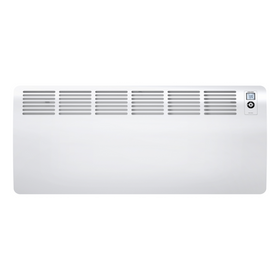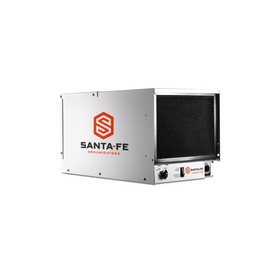
EchoHaven: A Net-Zero Community In Calgary
Last Updated: Apr 13, 2025In any climate, building an all-electric, net-zero energy home powered entirely by solar panels requires a dedicated homeowner, along with a team of qualified sustainable-building experts. Constructing such a home in a Canadian climate, where during winter nights the temperature may dip down into the -20s drives a narrative that results in a completely different story.
In northwest Calgary, five like-minded families have created an eco-neighborhood called EchoHaven. Located in the Rocky Ridge area, EchoHaven is a small neighborhood of 25 homes with a focus on sustainable building and caring for nearby natural areas. The neighborhood focuses on quality of life, minimal environmental footprint, healthy and extremely energy-efficient homes, solar-heating strategies, and water conservation initiatives.
At EchoHaven, all homes built to achieve a minimum EnerGuide 84 efficiency rating. The EnerGuide Rating System is a program managed by the Canadian government in order to give homeowners more information about the energy performance of their homes. In effect, the homes in EchoHaven see a 50 percent reduction of reliance on grid power compared to other homes in the area. Some EchoHaven homes are designed to achieve zero greenhouse gas emissions.
The families who live in EchoHaven, besides enjoying energy-efficient homes with low carbon footprints, also co-own ecologically pristine public areas. They work together around common environmental goals.
Dave Spencer and Debbie Wiltshire were among the five original families who started the process of imagining EchoHaven. Today, they proudly own and live in a 2,750-square-foot, net-zero home that has received net-zero energy use certification.
Modeling Thermal Performance in a Cold Climate
From the outside, Spencer and Wilshire’s home has a modern feel with a bright, bold color palette. Designed by Kim Walton, founder of Bow Crow Design, the design and building goals of the house were to maximize the benefits of the south-facing site, reduce the owners’ ecological footprint, and use locally-sourced, durable, and healthy materials with recycled content. The house’s grid-tied 5.2 kilowatts (kW) photovoltaic (PV) system provides the home’s energy. Fastened to the metal roof, the solar panel system complements the home’s geometric exterior design.
Table of Contents
- Energy Efficiency and Lessons Learned
- A Sustainable Community Model

Walton sited the house toward the south, for good reason. The large, south-facing, energy-efficient windows have a high SHGC rating that allows solar heat to warm the home, thus reducing the need for mechanical heating. The windows bring in abundant natural light, as well, reducing the need for lighting that requires electricity (except at night, of course). The windows, in combination with a completely sealed and well-insulated building envelope, have made the home’s passive solar heating strategy possible.

The home utilizes radiant electric-heat panels developed by Thermaray. The panels are hidden behind thick drywall ceilings, allowing the drywall to capture more of the released heat. Thick drywall (5/8”) and concrete floors act as thermal mass that helps absorb and retain heat gain from the passive solar heating as well. As temperatures drop at night, the heat from the sun that was captured during the day is released into the home. Two solar thermal panels integrated into the exterior finishes supply to part of the household’s solar thermal/on-demand hot water heating.

The walls achieve an impressive R59 insulation rating—significantly higher than building code. This is achieved through three-and-a-half inches of two-pound polyurethane insulation, along with eight inches of dense-pack cellulose insulation fiber at the interior, which protects the home from frigid Calgary winters. The roof achieves a whopping R108 insulation rating. The floor is R70. The home’s passive house design, with a focus on extreme airtightness, shields the couple from the outside elements.
Energy Efficiency and Lessons Learned
The couple has carefully documented and monitored their home’s performance since occupying it in June 2012. Home monitoring is an eligibility requirement for certification through the International Living Future Institute. To reduce their overall home electricity demand, the couple incorporated several other energy-efficiency measures.
LED lights, in combination with natural light, reduce energy demand while keeping the interior bright and lively at night. The home’s interior is light-filled, comfortable, and quiet.
A condensing, vent-less clothes dryer minimizes heat loss through the building envelope. Condensing clothes dryers help eliminate an envelope penetration for exhaust. Captured condensate can also be cleaned and used for use, such as watering plants.”
Smart ventilation, including the use of a Heat Recovery Ventilator (HRV), was required to protect the airtight house’s interior air quality. This ventilation strategy also eliminates the need for air conditioning, which reduces the home’s summer energy demand. The home also has a unique “kill switch” located in the garage. This switch essentially allows the home to be turned “off” and can drastically reduce the “ghost load” or phantom power that contributes to energy use.

International Living Future’s project write-up also notes that “Inline fans in [the] mechanical air system were an innovation to deal with bathroom moisture and kitchen exhaust and avoid envelope penetrations. The fans are activated individually by timers. Exhausts go through the HRV rather than vented directly outside. There was some concern about kitchen exhaust particulates accumulating in the HRV filter, however, this has not been the case.”
Shop All Special Offers
Shop Special Offers on vetted Home Improvement products at low prices while supplies last.

Stiebel Eltron Accelera 300 E Heat Pump Water Heater
Stiebel Eltron
In Stock

Stiebel Eltron CON 300-2 Premium Wall-Mounted Convection Heater - 202030
Stiebel Eltron
In Stock

Santa Fe Compact70 Dehumidifier
Santa Fe
In Stock

Victory Range Hood Sunset 600 CFM White Flush Ceiling Mount Dimmable LED Range Hood
Victory Range Hoods
In Stock

Drolet Escape 1800-I Wood Stove Insert Trio (25ft) DB03127K
Drolet
In Stock

Victory Range Hood Sunset 600 CFM Flush Ceiling Mount Dimmable LED Range Hood
Victory Range Hoods
In Stock

Stiebel Eltron DHC-E 8/10-2 Plus Point-of-Use Electric Tankless Water Heater - 202145
Stiebel Eltron
In Stock

Stiebel Eltron CON 150-1 Premium Wall-Mounted Convection Heater - 202026
Stiebel Eltron
In Stock

Drolet Escape 1800-I Wood Insert Trio (35 FT) DB03128K
Drolet
Out of Stock

Stiebel Eltron Accelera 220 E Heat Pump Water Heater
Stiebel Eltron
In Stock

In the kitchen, the home owners reduced their overall refrigeration needs by building a “cool pantry” in a separate, insulated room that takes advantage of ground temperatures to preserve produce. EnerGuide-rated appliances include a refrigerator that only requires 539 kilowatt-hours (kWh) per year and a washer/dryer combo that uses 525 kWh per year. The laundry room incorporates several drying racks, which decreases the homeowners’ use of the clothes dryer.
A Sustainable Community Model
The home certainly is a model of sustainability, energy efficiency, and optimum thermal performance. As of March 2018, the home, designed and built to produce as much energy as it consumes, was just one of 15 high-performance structures completed in the planned, low-impact neighborhood of 25 homes.
Nestled into Calgary’s rolling hills with aspen stands and three wetland areas, the homes within the Ecohaven neighborhood all have low-flow water fixtures as part of water conservation. The community also reduces its dependence on municipal sources of water by integrating rainwater collection systems.
All stormwater is retained and managed within the community, thus reducing the need for sewer infrastructure. The wetlands located throughout the neighborhood receive the stormwater, which serves as a regenerative part of the landscape and helps strengthen the resiliency of the local ecosystem. EchoHaven homeowners forego large yards, opting instead to own one-quarter of the common areas, giving children safe spaces in which to enjoy the neighborhood creek and local forest, which are maintained by the community.
After living in their EchoHaven house, Spencer told Construction Canada that extensive thought and research went into the decision-making around insulation, heating systems, renewables, indoor air quality, and keeping building costs and electricity bills low. “What we did not anticipate was how much we love the feel of the house…,” he added. “We could never go back to living in a standard house. The extra effort was the best investment we have ever made.”
Adds designer Kim Walton, the EchoHaven house was the outcome of an effective collaborative design process. “The project incorporates elegant simplicity and clever solutions that have raised the bar for sustainable homes. A client who loves their home is the true measure of a successful project.”
Tobias Roberts
Tobias runs an agroecology farm and a natural building collective in the mountains of El Salvador. He specializes in earthen construction methods and uses permaculture design methods to integrate structures into the sustainability of the landscape.
